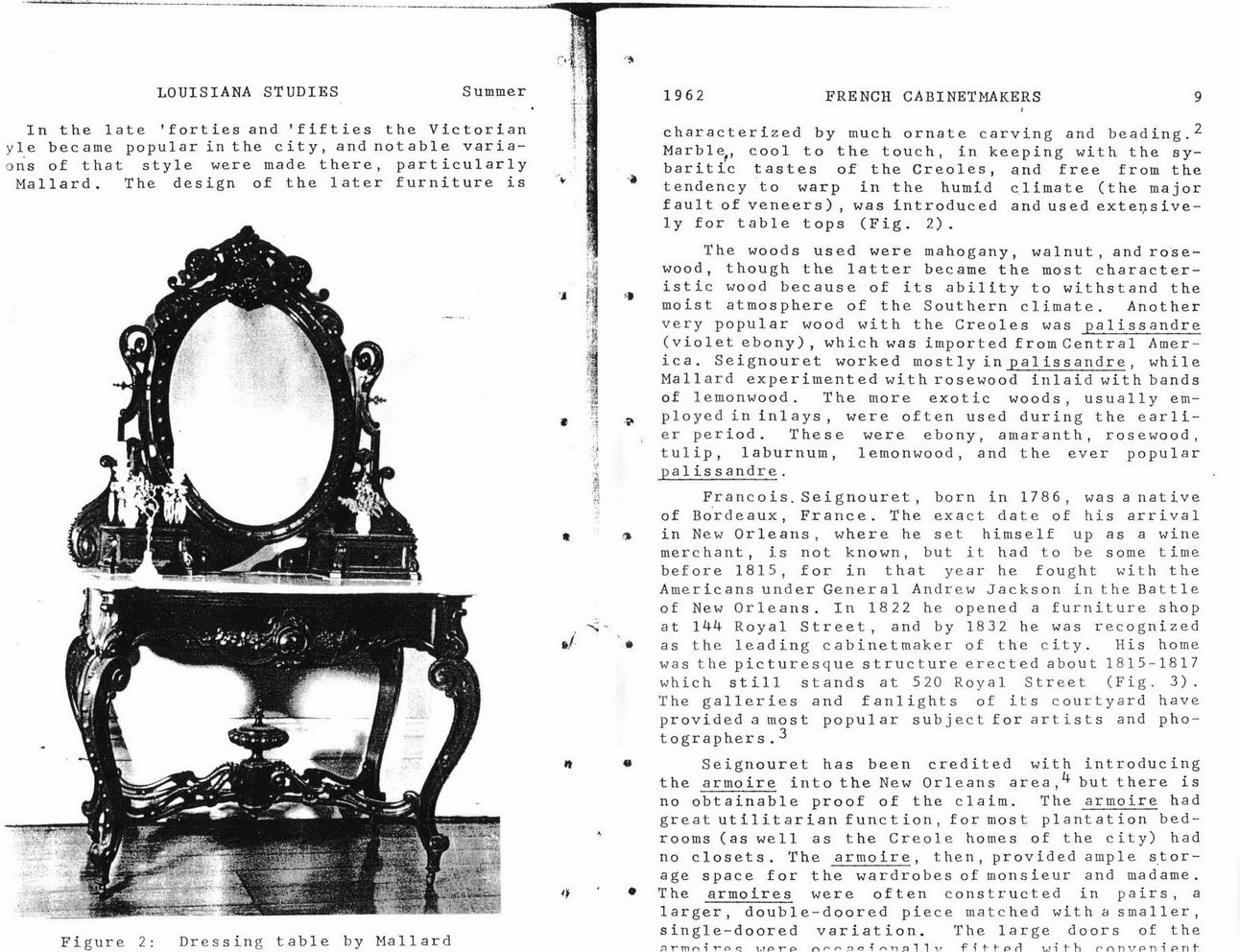This text was obtained via automated optical character recognition.
It has not been edited and may therefore contain several errors.
LOUISIANA STUDIES Summer In the late 'forties and 'fifties the Victorian yle became popular in the city, and notable varia-ons of that style were made there, particularly Mallard. The design of the later furniture is Figure 2: Dressing table by Mallard 1962 FRENCH CABINETMAKERS I 9 characterized by much ornate carving and beading.^ Marblef, cool to the touch, in keeping with the sybaritic tastes of the Creoles, and free from the tendency to warp in the humid climate (the major fault of veneers) , was introduced and used extensively for table tops (Fig. 2). The woods used were mahogany, walnut, and rosewood, though the latter became the most characteristic wood because of its ability to withstand the moist atmosphere of the Southern climate. Another very popular wood with the Creoles was palissandre (violet ebony), which was imported from Central America. Seignouret worked mostly in palissandre, while Mallard experimented with rosewood inlaid with bands of lemonwood. The more exotic woods, usually employed in inlays, were often used during the earlier period. These were ebony, amaranth, rosewood, tulip, laburnum, lemonwood, and the ever popular palissandre. Francois.Seignouret, born in 1786, was a native of Bordeaux, France. The exact date of his arrival in New Orleans, where he set himself up as a wine merchant, is not known, but it had to be some time before 1815, for in that year he fought with the Americans under General Andrew Jackson in the Battle of New Orleans. In 1822 he opened a furniture shop at 144 Royal Street, and by 1832 he was recognized as the leading cabinetmaker of the city. His home was the picturesque structure erected about 1815-1817 which still stands at 520 Royal Street (Fig. 3). The galleries and fanlights of its courtyard have provided a most popular subject for artists and photographers . ^ Seignouret has been credited with introducing the armo ire into the New Orleans area,^ but there is no obtainable proof of the claim. The armo ire had great utilitarian function, for most plantation bedrooms (as well as the Creole homes of the city) had no closets. The armo ire, then, provided ample storage space for the wardrobes of monsieur and madame. The armo ires were often constructed in pairs, a larger, double-doored piece matched with a smaller, single-doored variation. The large doors of the arnini roc: uprp 1 v f 1 f- f- p rl ui fh nonvpm'pnt

Mallard Furniture-(French-Cabinetmakers-in-the-Vieux-Carre-by-Charles-D.-Peavy-1962)-part2